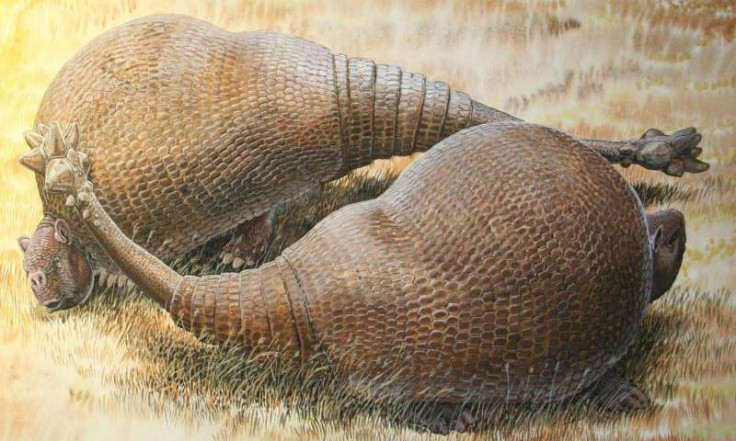Extinct ancestors of armadillos the size of cars roamed South America 35 million years ago

A study of 12,000-year-old DNA reports that creatures called glyptodonts roamed South America for millions of years until the last Ice Age. The DNA came from a sample of shell from a fossil in a Buenos Aires museum.
The tiny fragment came from Doedicurus, one of the most monstrous members of the family, which was up to 4m in length and weighed around 1.5 tonnes. Their physical attributes - an impenetrable shell - already put them as possible relatives of armadillos.
"Glyptodonts should probably be considered a subfamily of gigantic armadillos," said Frederic Delsuc, from the National Centre of Scientific Research (CNRS) and Montpellier University in France.
He added: "We speculate that the peculiar structure of their unarticulated carapace might have evolved as a response to the functional constraint imposed by the size increase they experienced over time."
Dr Delsuc's team used computer predictions to reconstruct some probable DNA sequences of armadillo ancestors, based on the genes of living species, according to a BBC report.
These vegetarian beasts, the researchers say, got progressively bigger over time until their extinction at the end of the Ice Age, around 10,000 years ago. They lived in South America during the Pleistocene era, which was also home to elephant-sized ground sloths and giant, sabre-toothed cats.
One of the main differences between this prehistoric group and their modern conterparts is the glyptodont's huge, dome-shaped shell, which was not articulated like the layered bands of the armadillo.
The researchers think this single, rounded shield might have evolved alongside the "spectacular increase" in the glyptodonts' size - which also explains why some older members of the family appear to have banded shells.
"Glyptodonts in fact represent an extinct lineage that likely originated 35 million years ago within the armadillo radiation," said co-author Hendrik Poinar from McMaster University, Canada, who published the findings in Current Biology.
© Copyright IBTimes 2025. All rights reserved.






















